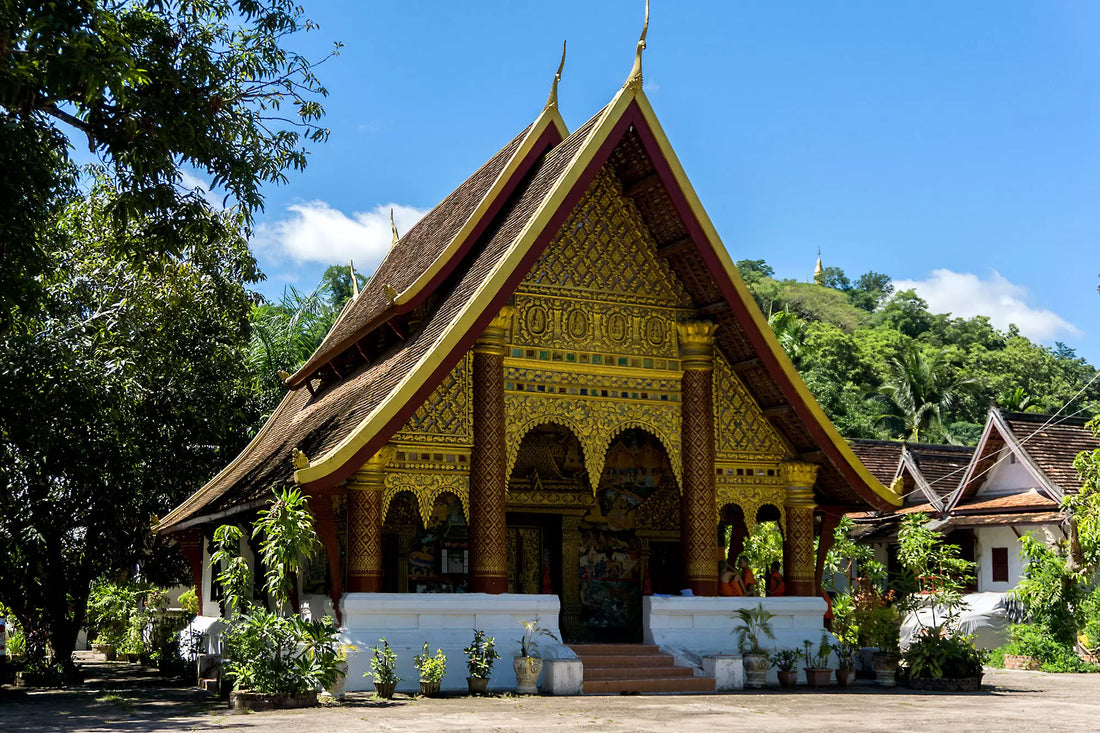
LUANG PRABANG
Share
Luang Prabang is located in the north of Laos, in the heart of a mountainous region. The city is built on a peninsula formed by the Mekong and Nam Khan rivers. Mountain ranges (especially the PhouThao and PhouNang mountains) surround the city in lush greenery.
The political and religious center of Luang Prabang is the peninsula, with its royal and noble residences and religious foundations. The traditional urban fabric of the old villages, each with its own temple, has been preserved by subsequent constructions. The colonial urban morphology, included harmoniously with the previous model. Formerly the city limits were defined by defensive walls.
The richness of Luang Prabang's architecture reflects the mix of styles and materials. One or two-story brick houses characterize the colonial element of the city. The many pagodas or "Vat" in Luang Prabang, which are among the most sophisticated Buddhist temples in Southeast Asia, are richly decorated (sculptures, engravings, paintings, gilding and furniture). Wat Xieng Thong, which dates back to the 16th century, encompasses an ensemble of the most complex structures of all the pagodas in the city. It is remarkable both from the archaeological point of view and from the iconographic and aesthetic point of view of Laos.
Many traditional Lao houses remain; they are constructed of wood using traditional techniques and materials introduced in the colonial period, such as woven bamboo panels lined with wattle and daub. Colonial brick buildings, often with balconies and other wooden decorative elements, line the main road and the Mekong.
Luang Prabang's built heritage is perfect harmony in the natural environment. The sacred Mount Phousi is located in the heart of the historic city built on a peninsula bordered by the Mekong and Nam Khan. Ceremonies to appease nagas and other evil spirits, and Buddhist religious practices perpetuate the sanctity of the place. The natural spaces located in the heart of the city and along the banks of the river and the wetlands complete this preserved natural environment.

